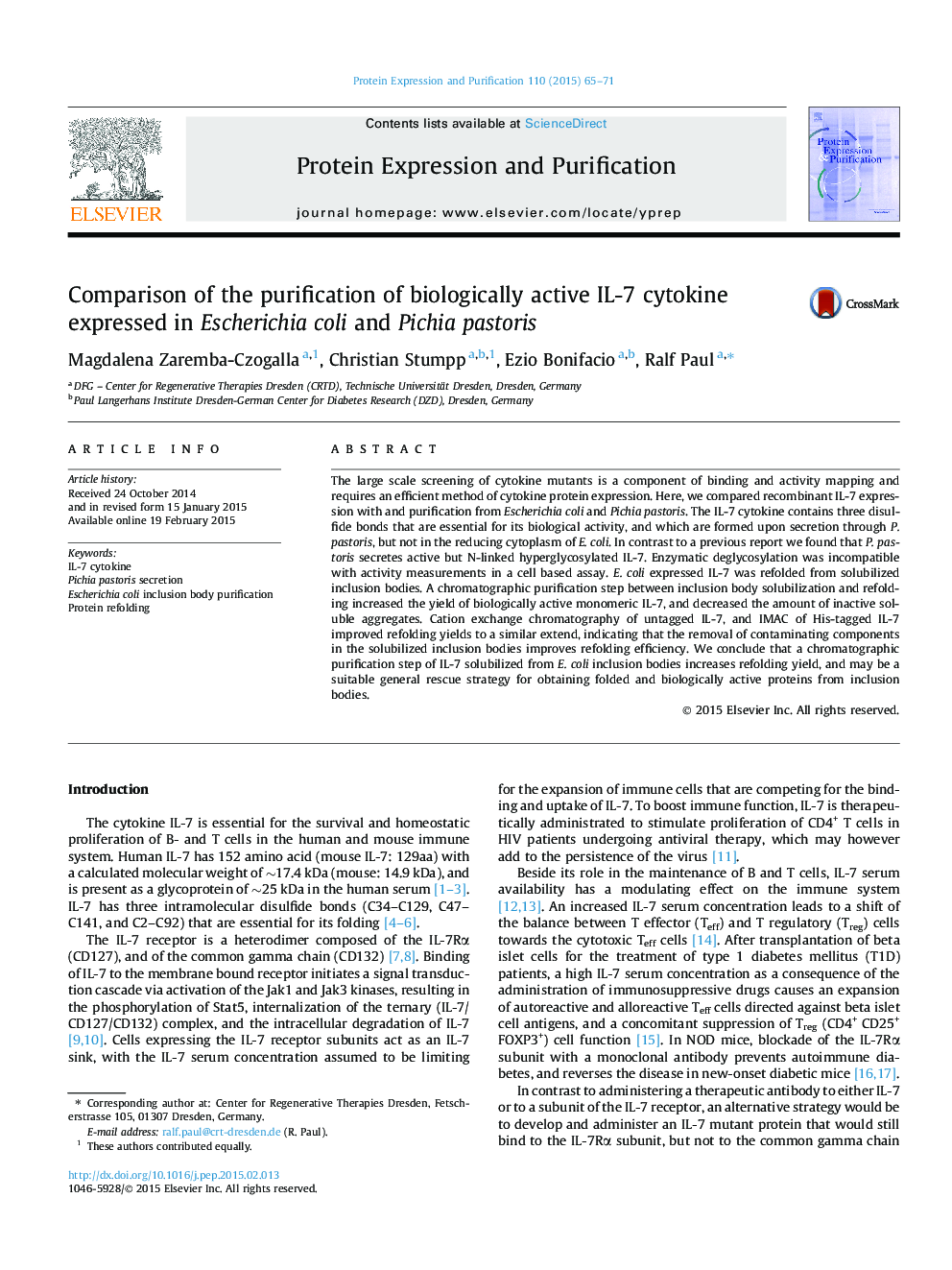| Article ID | Journal | Published Year | Pages | File Type |
|---|---|---|---|---|
| 2020366 | Protein Expression and Purification | 2015 | 7 Pages |
•Human IL-7 secreted by Pichia pastoris was N-linked hyperglycosylated.•Enzymatic deglycosylation of IL-7 interfered with a cell based activity assay.•Purification of IL-7 from E. coli inclusion bodies increased refolding yields.•N- or C-terminal His-tagging of IL-7 did not interfere with cell based activity assay.
The large scale screening of cytokine mutants is a component of binding and activity mapping and requires an efficient method of cytokine protein expression. Here, we compared recombinant IL-7 expression with and purification from Escherichia coli and Pichia pastoris. The IL-7 cytokine contains three disulfide bonds that are essential for its biological activity, and which are formed upon secretion through P. pastoris, but not in the reducing cytoplasm of E. coli. In contrast to a previous report we found that P. pastoris secretes active but N-linked hyperglycosylated IL-7. Enzymatic deglycosylation was incompatible with activity measurements in a cell based assay. E. coli expressed IL-7 was refolded from solubilized inclusion bodies. A chromatographic purification step between inclusion body solubilization and refolding increased the yield of biologically active monomeric IL-7, and decreased the amount of inactive soluble aggregates. Cation exchange chromatography of untagged IL-7, and IMAC of His-tagged IL-7 improved refolding yields to a similar extend, indicating that the removal of contaminating components in the solubilized inclusion bodies improves refolding efficiency. We conclude that a chromatographic purification step of IL-7 solubilized from E. coli inclusion bodies increases refolding yield, and may be a suitable general rescue strategy for obtaining folded and biologically active proteins from inclusion bodies.
